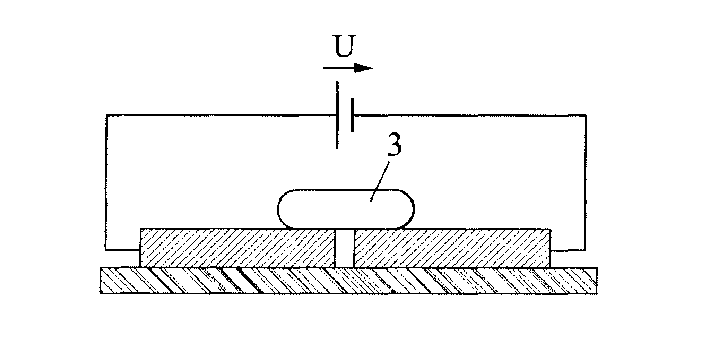Spin-state transition molecule-based photoelectric device
Référence
04188-01
Mots-clés
Statut des brevets
French priority patent application FR11500949 filed on February 7, 2011 and entitled “Agencement optimisé de particules de triazole”




Inventeurs
Jean-François LÉTARD
Céline ETRILLARD
Bernard DOUDIN
Vina FARAMARZI
Jean-François DAYEN
Statut commercial
Exclusive or non-exclusive license
Laboratoire
Institut de physique et chimie des matériaux de Strasbourg (IPCMS, UMR7504), Strasbourg, France
Institut de Chimie de la Matière Condensée de Bordeaux (ICMCB, UPR9048), Bordeaux, France
Description
CONTEXT
The invention relates to the field of photoelectric devices.
Materials known to the state of the art for forming photoelectric devices are generally semiconductor materials. They are, for example, monocrystalline materials such as silicon or gallium arsenide, or polycrystalline silicon or other amorphous materials.
Other materials exist, such as colorant-based materials.
Another known solution is the use of organic materials.
At present, none of the known solutions is completely satisfactory. Devices having better energy yield or better sensitivity or low design cost are sought after. The world of industry, therefore, is searching for new ways of producing such devices…
TECHNICAL DESCRIPTION
In the present work, the inventors have developed a device whose properties vary as a function of luminosity. Said device comprises two electrodes separated from one another, wherein at least one temperature controlled electronic spin-state transition particle is in direct contact with each of the two electrodes. The particle is chosen as being of the ionic type and having a transition metal that bears a cationic charge. [Fe(R-Trz)3](X)n

Because the particle has a temperature controlled electronic spin-state transition, below a transition temperature, the particle is preferably in a first electronic spin state between the high electronic spin state and the low electronic spin state and, above this transition temperature, the particle is preferably in the other of the two electronic spin states.
In particular, in a preferred case, below a transition temperature, the particle is in the low electronic spin state and, above this transition temperature, the particle is in the high electronic spin state. The transition temperature can have different values depending on whether the transition occurs by increasing the temperature of by decreasing the temperature.
As a consequence, the conductivity of the particle varies as a function of the intensity of incident light.
In this way, the particle in contact with the two electrodes has, in darkness, a conductivity comparable to that of a semiconductor material.
This patent family is the consequence of research carried on triazole-based molecules discovered by the laboratory ICMCB which turned out to have photoconductive and photovoltaic properties. Said molecules are already patented and licensed.
DEVELOPMENT STAGE
- Laboratory prototype (5µm x 0,1µm)
- Photoconductive current density = 8.104A.m-2.
BENEFITS
- Molecule with temperature controlled electronic spin-state transition
- Device with properties vary as a function of luminosity
INDUSTRIAL APPLICATIONS
Photoconductive (photodiode) and photovoltaic devices.
For further information, please contact us (Ref 04188-01)